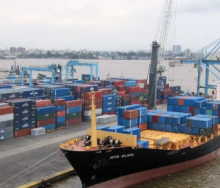The Citrus Growers’ Association (CGA) has forecast growth in overall export volumes as the busy season gets under way this month.
This is according to CGA CEO Justin Chadwick, who highlighted the association’s annual export forecast figures, which were released at the Citrus Marketing Forum held last week.
The association’s latest forecasts predict that 37.9 million (15kg) cartons of lemons will be exported to key markets, an increase of 7% over last year. This continues the upward curve of lemon exports, which has more than doubled since 2016.
Orange exports are also expected to rise 4% for navel oranges, with 25.6 million (15kg) cartons expected to be packed.
Valencia orange export production is likely to improve in 2024 and return to its long-term trajectory, increasing 12% to 58 million (15kg) cartons. However, the Orange Focus Group highlighted that, due to substantially higher returns expected for fruit being supplied to local processors, exports could be reduced by up to 5%. This has not been factored in to the forecast of 58 million cartons.
Grapefruit exports are also predicted to increase back up to the long-term average.
“The 14% growth figure translates into 16.7 million (15kg) cartons. The increased export volume can partly be ascribed to processing fruit (PP class) once again being exported to China, which was not the case last year,” said Chadwick.
He said the satsuma season was likely to close around the 1.7 million mark (up 16%), while clementines and novas were expected to reach 5.4 million (up 8%) and 4.5 million (up 8%), respectively. He said it was too early to tell what the late mandarin crop would be at this stage and a full estimate would be available later in the season.
“This is a testament to the resilience of South African citrus growers producing more citrus under challenging circumstances, such as steep increases in input costs, load shedding and deteriorating public infrastructure. This increase is also a result of younger trees coming into production across a number of regions,” said Chadwick.
“The quality of the fruit for 2024 looks to be excellent and timing for harvesting is expected to be typical. Recent dry conditions in the northern growing regions could mean that fruit sizes might be somewhat smaller than in 2023, but late rains could change this.”
During the 2023 export season Southern African citrus growers packed 165.1 million (15kg) cartons for delivery to global markets, an increase of approximately 800 000 cartons compared with 2022.
Chadwick estimated that the industry could potentially reach the target of 200 million cartons in the next four years, and possibly 260 million cartons by 2032.
“It is important to note that, while volumes are increasing, this does not automatically mean an increase in the profitability or viability of many citrus farms, given the steep increases in input costs across the value chain.”
In additional, he said the European Union's “discriminatory and unscientific” phytosanitary regulations regarding Citrus Black Spot (CBS) and False Coddling Moth (FCM) posed a serious threat as it could lead to South Africa being denied access to the EU market, which accounted for more than a third of its citrus exports.
“Given the high stakes involved, the CGA hopes the South African government will soon call for the establishment of an independent World Trade Organization (WTO) panel that can adjudicate on the FCM matter. On CBS it is essential that the government calls for a WTO consultation process,” Chadwick said.
He added that the industry still feared equipment breakdowns and disruptions that could affect the export season, although Transnet was working with stakeholders to confront port inefficiencies.
“The CGA views the expeditious introduction of the appointed private operator of Durban’s Pier 2 container terminal, International Container Terminal Services Inc. (ICTSI), as critical. Any delays in the expansion of private-sector involvement in port logistics will, in effect, imperil the export economy,” said Chadwick.













